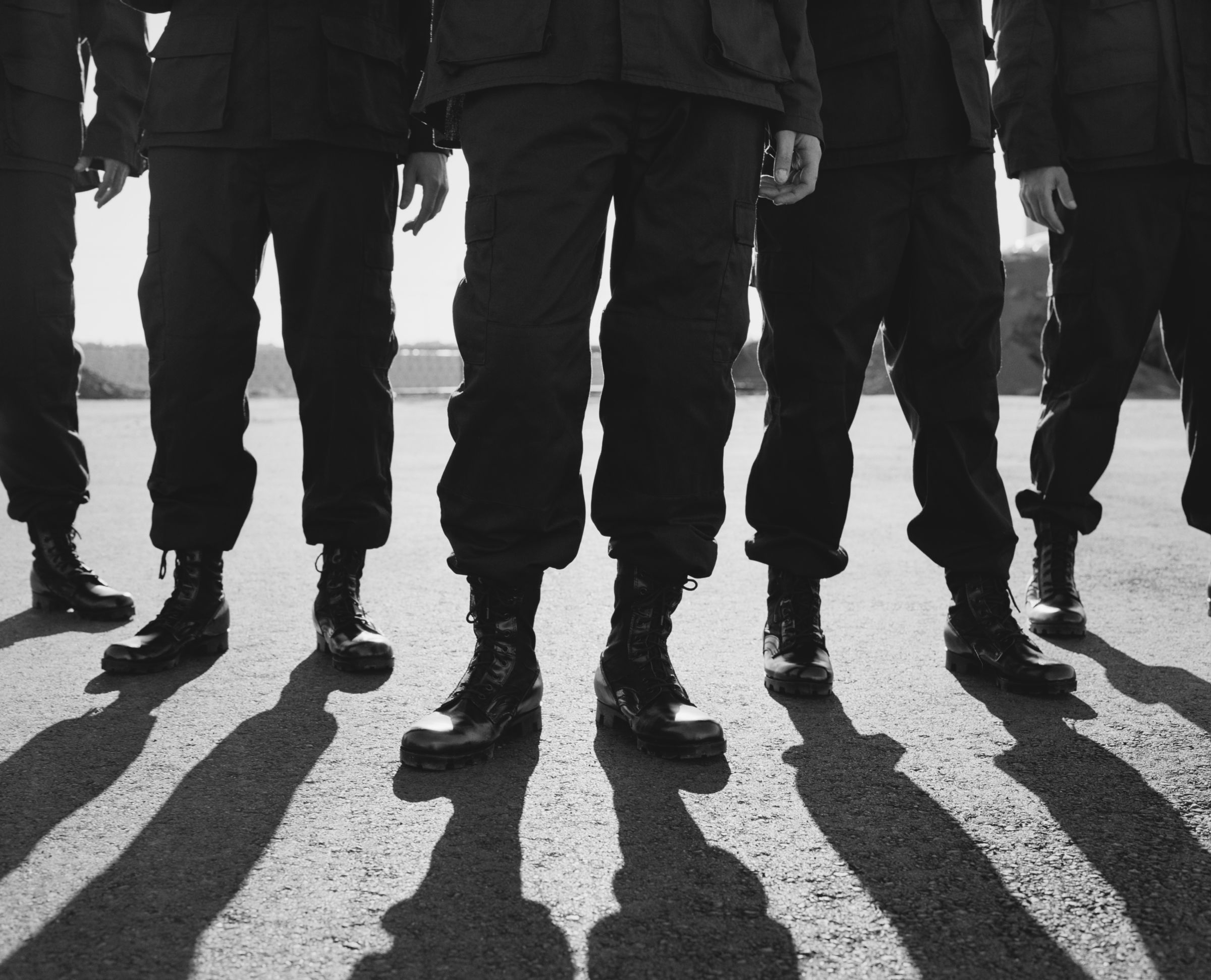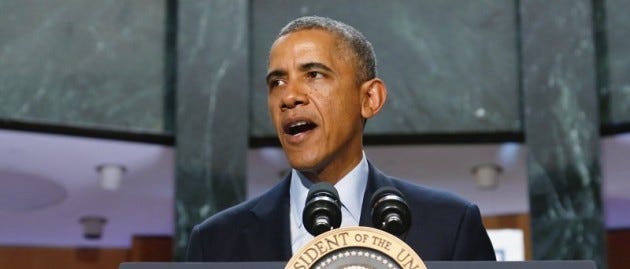2aguy
Diamond Member
- Jul 19, 2014
- 112,365
- 52,611
- 2,290
Not true.
Nothing supports your interpretation of the 2nd amendment.
You mean except for the entire legal history of the United States....?
Follow along with the video below to see how to install our site as a web app on your home screen.
Note: This feature may not be available in some browsers.
Not true.
Nothing supports your interpretation of the 2nd amendment.
You mean except for the entire legal history of the United States

In 1791, under President George Washington, the “whiskey tax” was imposed on distilled spirits. Farmers in Western Pennsylvania resisted the tax, which they believed was counter to the principles of the American Revolution. The conflict culminated in a group of more than 500 armed men attacking the home of the tax inspector, which prompted a large-scale government response. Washington himself rode out to meet them with 13,000 militiamen sent by the governors of Virginia, Maryland, New Jersey and Pennsylvania.
Fortunately, the rebels disbanded and went home before Washington arrived and armed conflict was averted, but there was no missing the fact that the first federal use of the militia following the Revolutionary War was an attempt by the government to enforce a tax that many farmers felt was unjust. The militia during this period was very much an instrument of the state, and it was used as a means to violently enforce the law much more often than it was called upon for defense of the nation or the states.
During 1792, the formal role of the militia was further amended in response to the events of the Northwest Indian War. The Militia Acts of 1792 granted the president the authority to call up and command the militia (the Constitution had previously reserved this power to Congress). They also conscripted every able-bodied white male citizen between 18 and 45 into local militia units, and further required them to own a musket, bayonet, belt, two spare flints, a cartridge box, 24 bullets and a knapsack. Requiring militia members to own weapons and ammunition was eminently practical, as it spared the government the enormous expense of arming them. At this point, it was clear that the federal government wanted to be able to command the militia without assuming the responsibilities of organizing, training and supplying them. Meeting these responsibilities would be the burden of the individual states.
The whole article is informative!!!

How the Second Amendment’s Militia Became Part of Today’s Standing Army
The primary premise behind the writing of the Second Amendment is no longer valid and it should be reassessed.truthout.org
You're nutty! Did Obama arm this imaginary force, in your head?
 cspoa.org
cspoa.org

 thepetroglyph.com
thepetroglyph.com
How are you being punished? Keep your guns in the home and forget the Wyatt Earp crap.Why do you want to punish the victims, when you and the democrats are doing this?
California Democrats hate the gun, not the gunman – Orange County Register
Now that Democrats have supermajorities in the California state Legislature, they’ve rolled into Sacramento with a zest for lowering the state’s prison population and have interpreted St. Augustine’s words of wisdom to mean, “Hate the gun, not the gunman.”
I say this because, once they finally took a break from preaching about the benefits of stricter gun control, the state Senate voted to loosen sentencing guidelines for criminals convicted of gun crimes.
Currently, California law requires anyone who uses a gun while committing a felony to have their sentence increased by 10 years or more in prison — on top of the normal criminal penalty. If enacted, Senate Bill 620 would eliminate that mandate.
The bill, which passed on a 22-14 party-line vote, with support only from Democrats, now heads to the state Assembly for consideration.
Republicans and the National Rifle Association have vowed to campaign against it.
Why have Democrats suddenly developed a soft spot for criminals convicted of gun crimes? The bill’s author, state Sen. Steve Bradford, D-Gardena, says that he was motivated to write the bill after a 17-year-old riding in a car involved in a drive-by shooting was sentenced to 25 years in prison, even though he claims that he wasn’t the one who pulled the trigger.
------------
Prop. 57, for example, very deceptively and fundamentally changed the definition of what constitutes a “non-violent” offense.
supplying a firearm to a gang member,
l
felon obtaining a firearm,
discharging a firearm on school grounds
Uh , in this time of Rising Illegal Immigration , Stratospheric Crime , Hatred of America and Class warfare and civil unrest , Legal Carry is a stabilizing forceHow are you being punished? Keep your guns in the home and forget the Wyatt Earp crap.
How are you being punished? Keep your guns in the home and forget the Wyatt Earp crap.
A police officer cannot, without reasonable suspicion or probable cause, constitutionally stop you from walking down the street, detain, you, restrain you, and check for outstanding warrants.So making background checks so they contain ZERO loopholes would not be an infringement.
How is getting a background check infringing. You're a Law Abiding Citizen.
The Peace Corp and American Corp are Police Forces in right winger's heads, eh? Are they armed?Typical ignorant, clueless, uninformed, arrogant leftwing tard. So sure of 10,000 things you don't know the first thing about. Thankfully, alert people stopped the madness.
Obama, Soros plan nationalized US police force
Share The News!(by Rick Dalton) We have warned about the United Nations plan for a world police force. CSPOA is…cspoa.org

Obama’s National Police & Security Force Plan
On July 2, 2008 in Colorado Springs Obama talked about doubling the size of the Peace Corps, quadruple the size of AmeriCorps as well as increasing the size of the military at home. This statement…thepetroglyph.com
"The people" in most of what the opinion writer stated, were limited at the time and later.... I had no right to vote, as example....I wasn't created equal, at the time...."The people" at the time, depended on mostly, who you were....an adult white male.Yeah.....thanks for the lesson on the Whiskey Rebellion.......
Now, go read the Heller decision where they actually go through the entire history of the 2nd Amendment.......you know, where it states....
...The Right of the people to keep and bear arms shall not be infringed......
You should read that part over and over again....
Let me help....
1. Operative Clause.
a. “Right of the People.”
The first salient feature of the operative clause is that it codifies a “right of the people.” The unamended Constitution and the Bill of Rights use the phrase “right of the people” two other times, in the First Amendment’s Assembly-and-Petition Clause and in the Fourth Amendment’s Search-and-Seizure Clause. The Ninth Amendment uses very similar terminology (“The enumeration in the Constitution, of certain rights, shall not be construed to deny or disparage others retained by the people”). All three of these instances unambiguously refer to individual rights, not “collective” rights, or rights that may be exercised only through participation in some corporate body.5
-----------
Three provisions of the Constitution refer to “the people” in a context other than “rights”—the famous preamble (“We the people”), §2 of Article I (providing that “the people” will choose members of the House), and the Tenth Amendment (providing that those powers not given the Federal Government remain with “the States” or “the people”). Those provisions arguably refer to “the people” acting collectively—but they deal with the exercise or reservation of powers, not rights. Nowhere else in the Constitution does a “right” attributed to “the people” refer to anything other than an individual right.6 What is more, in all six other provisions of the Constitution that mention “the people,” the term unambiguously refers to all members of the political community, not an unspecified subset. As we said in United States v. Verdugo-Urquidez, 494 U. S. 259, 265 (1990):
----
The Second Amendment is naturally divided into two parts: its prefatory clause and its operative clause. The former does not limit the latter grammatically, but rather announces a purpose.
--------
Although this structure of the Second Amendment is unique in our Constitution, other legal documents of the founding era, particularly individual-rights provisions of state constitutions, commonly included a prefatory statement of purpose.
-----
But apart from that clarifying function, a prefatory clause does not limit or expand the scope of the operative clause. See F. Dwarris, A General Treatise on Statutes 268–269 (P. Potter ed. 1871) (hereinafter Dwarris); T. Sedgwick, The Interpretation and Construction of Statutory and Constitutional Law 42–45 (2d ed. 1874).3 “
---
Reading the Second Amendment as protecting only the right to “keep and bear Arms” in an organized militia therefore fits poorly with the operative clause’s description of the holder of that right as “the people.” We start therefore with a strong presumption that the Second Amendment right is exercised individually and belongs to all Americans.
------
(a) The Amendment’s prefatory clause announces a purpose, but does not limit or expand the scope of the second part, the operative clause. The operative clause’s text and history demonstrate that it connotes an individual right to keep and bear arms. Pp. 2–22.
---
(c) The Court’s interpretation is confirmed by analogous armsbearing rights in state constitutions that preceded and immediately followed the Second Amendment. Pp. 28–30.
----
(e) Interpretation of the Second Amendment by scholars, courts and legislators, from immediately after its ratification through the late 19th century also supports the Court’s conclusion. Pp. 32–47.
----
(f) None of the Court’s precedents forecloses the Court’s interpretation. Neither United States v. Cruikshank, 92 U. S. 542, 553, nor Presser v. Illinois, 116 U. S. 252, 264–265, refutes the individualrights interpretation. United States v. Miller, 307 U. S. 174, does not limit the right to keep and bear arms to militia purposes, but rather limits the type of weapon to which the right applies to those used by the militia, i.e., those in common use for lawful purposes. Pp. 47–54.
https://www.supremecourt.gov/opinions/07pdf/07-290.pdf
The right to keep and bear arms includes the right to use a firearm in self-defense.NO WHERE in the second amendment does it mention individual self defense.
Ok.The right to keep and bear arms includes the right to use a firearm in self-defense.
Ok.
Lets say you are right....even though not once does the 2nd, mention the individual's right to self-defense....
It's the same with abortion, and contraception, and sexual partners, and medical decisions etc that claim a right to Privacy,....which also, are not specifically mentioned in the constitution...
As the right to kep and bear arms includes the right to use a firearm in self-defense, there must be a right to self-defense.Ok.
Lets say you are right....even though not once does the 2nd, mention the individual's right to self-defense....
Non seq.It's the same with abortion, and contraception, and sexual partners, and medical decisions etc that claim a right to Privacy...
Exhibit AWhere does the constitution say and spell out that you have a right to self defense?